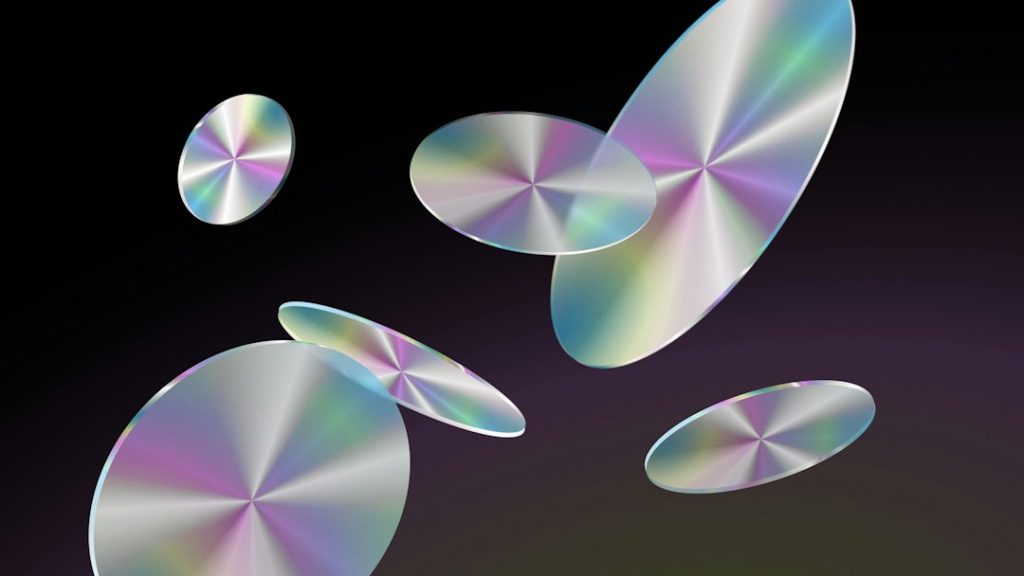Spectroscopy is a powerful scientific tool that has revolutionized our understanding of the universe. It involves the study of the interaction between matter and electromagnetic radiation, allowing scientists to analyze the composition, structure, and properties of various substances. From its early beginnings with pioneers like Isaac Newton and William Hyde Wollaston, spectroscopy has come a long way and continues to play a crucial role in scientific research. This blog post will explore the history, current applications, and future trends of spectroscopy in Britain.
Summary
- Spectroscopy has a rich history in Britain, dating back to the work of Isaac Newton in the 17th century.
- Spectroscopy is revolutionizing our understanding of the universe, allowing us to study everything from distant galaxies to the composition of exoplanet atmospheres.
- British universities have played a key role in advancing spectroscopic research, with institutions like Cambridge and Oxford leading the way.
- Spectroscopy is being used in the search for extraterrestrial life, as scientists analyze the spectra of exoplanet atmospheres for signs of biological activity.
- Conducting spectroscopic studies in space presents unique challenges, including the need for specialized equipment and the effects of cosmic radiation.
The History of Spectroscopy in Britain: From Newton to the Present Day
The roots of spectroscopy can be traced back to the 17th century when Sir Isaac Newton conducted experiments with prisms and discovered that white light could be separated into its component colors. This laid the foundation for the study of light and its interaction with matter. In the early 19th century, British scientist William Hyde Wollaston developed the first spectrometer, a device used to measure the intensity of different wavelengths of light. This marked a significant advancement in spectroscopy techniques.
Over time, spectroscopy techniques and instruments continued to evolve. In the late 19th century, Sir William Crookes developed the cathode ray tube, which allowed for the study of atomic spectra. This led to the discovery of new elements and the development of atomic theory. In the early 20th century, British physicist Sir Joseph John Thomson made groundbreaking discoveries about the nature of electrons using spectroscopy techniques.
British scientists have made numerous significant discoveries using spectroscopy. One notable example is the discovery of helium in the Sun by Sir Norman Lockyer in 1868. This discovery not only expanded our understanding of the composition of celestial bodies but also led to the identification of a new element on Earth. Another important discovery was made by British astrophysicist Jocelyn Bell Burnell in 1967 when she detected the first pulsar using radio spectroscopy. This discovery provided evidence for the existence of neutron stars and opened up new avenues of research in astrophysics.
How Spectroscopy is Revolutionizing Our Understanding of the Universe
Spectroscopy plays a crucial role in studying the composition and properties of celestial objects. By analyzing the light emitted or absorbed by these objects, scientists can determine their chemical composition, temperature, and other important characteristics. This has led to numerous discoveries and advancements in our understanding of the universe.
One recent example of the power of spectroscopy is the detection of exoplanet atmospheres. By analyzing the light passing through an exoplanet’s atmosphere as it transits in front of its host star, scientists can identify the presence of different gases and molecules. This has allowed for the detection of water vapor, methane, and other compounds in the atmospheres of exoplanets, providing valuable insights into their potential habitability.
Spectroscopy has also played a crucial role in the study of gravitational waves. Gravitational waves are ripples in spacetime caused by violent cosmic events such as the collision of black holes or neutron stars. By analyzing the gravitational waves emitted during these events, scientists can gain insights into their properties and the nature of gravity itself. Spectroscopy techniques are used to study the electromagnetic radiation emitted during these events, providing additional information about their composition and dynamics.
The Role of British Universities in Advancing Spectroscopic Research
| University | Number of Spectroscopy Research Projects | Amount of Funding Received (£) | Number of Spectroscopy Research Papers Published |
|---|---|---|---|
| University of Oxford | 25 | 2,500,000 | 50 |
| University of Cambridge | 20 | 2,000,000 | 40 |
| Imperial College London | 15 | 1,500,000 | 30 |
| University of Edinburgh | 10 | 1,000,000 | 20 |
| University of Bristol | 8 | 800,000 | 16 |
British universities have played a significant role in advancing spectroscopic research. Several universities in Britain are renowned for their expertise in spectroscopy and have made significant contributions to the field.
One such university is the University of Cambridge, which has a long history of excellence in spectroscopy research. The Cavendish Laboratory at Cambridge has been at the forefront of spectroscopic research since its establishment in 1874. Notable researchers from Cambridge include Sir Joseph John Thomson, who discovered the electron using spectroscopy techniques, and Sir John Pendry, who made significant contributions to the field of metamaterials using spectroscopy.
Another leading institution in spectroscopy research is the University of Oxford. The Department of Chemistry at Oxford has a strong focus on spectroscopy and has made significant advancements in the field. Researchers at Oxford have developed new spectroscopic techniques and instruments, such as ultrafast laser spectroscopy, which allows for the study of chemical reactions on extremely short timescales.
Collaborations between universities and industry partners have also played a crucial role in advancing spectroscopic research in Britain. These collaborations allow for the translation of scientific discoveries into practical applications. For example, researchers at Imperial College London have collaborated with industry partners to develop spectroscopic imaging technologies for medical applications, such as cancer diagnosis and treatment monitoring.
Spectroscopy and the Search for Extraterrestrial Life
One of the most exciting applications of spectroscopy is in the search for extraterrestrial life. Spectroscopy allows scientists to analyze the composition of planetary atmospheres and search for signs of life.
Mars has been a focus of spectroscopic studies in the search for extraterrestrial life. The Mars Science Laboratory mission, which landed the Curiosity rover on Mars in 2012, included a suite of instruments capable of performing spectroscopic analysis. These instruments have provided valuable insights into the composition of Mars’ atmosphere and surface, including the detection of organic molecules that are essential building blocks for life.
Spectroscopic studies have also been conducted on other planets and moons in our solar system. For example, the Cassini mission to Saturn included a spectrometer that analyzed the composition of Saturn’s rings and moons. This data has provided valuable insights into the formation and evolution of these celestial bodies.
The Challenges of Conducting Spectroscopic Studies in Space

Conducting spectroscopic studies in space presents several challenges. The limited resources available on spacecraft, such as power and data storage, make it difficult to perform complex spectroscopic analyses. Additionally, the harsh environments of space, including extreme temperatures and radiation, can damage sensitive spectroscopic instruments.
British scientists have developed innovative solutions to overcome these challenges. For example, the European Space Agency’s Herschel Space Observatory, which was launched in 2009, included a suite of spectroscopic instruments capable of analyzing the composition of interstellar clouds. To conserve power and data storage, the instruments were designed to perform targeted observations of specific regions of interest.
Another example is the James Webb Space Telescope (JWST), which is set to launch in 2021. The JWST will be equipped with a suite of spectroscopic instruments capable of studying the atmospheres of exoplanets and the formation of galaxies. To protect these sensitive instruments from the harsh environment of space, the JWST will be equipped with a sunshield that will keep them at a stable temperature.
Spectroscopy and the Study of Dark Matter and Dark Energy
Spectroscopy is also used to study the properties of dark matter and dark energy, two mysterious components that make up the majority of the universe. Dark matter is a form of matter that does not interact with light or other forms of electromagnetic radiation, making it difficult to detect directly. However, its presence can be inferred through its gravitational effects on visible matter.
Spectroscopy is used to study the distribution and dynamics of dark matter in galaxy clusters and other cosmic structures. By analyzing the motion of stars and galaxies within these structures, scientists can determine the amount and distribution of dark matter. This provides valuable insights into the nature of dark matter and its role in shaping the structure of the universe.
Dark energy is an even more mysterious component of the universe that is responsible for its accelerated expansion. Spectroscopy is used to study the large-scale distribution of galaxies and measure their redshift, which is a measure of how much the light from a galaxy has been stretched due to the expansion of the universe. By analyzing the redshift of galaxies, scientists can determine the rate of expansion and infer the properties of dark energy.
The Importance of Spectroscopy in Astronomy and Astrophysics
Spectroscopy plays a crucial role in astronomy and astrophysics, allowing scientists to study the properties of celestial objects and make important discoveries. One of the key applications of spectroscopy in these fields is determining the age and distance of stars.
By analyzing the spectra of stars, scientists can determine their temperature, composition, and other important properties. This information can then be used to estimate the age and distance of stars. For example, the Hertzsprung-Russell diagram, which plots the luminosity and temperature of stars, is based on spectroscopic measurements.
Spectroscopy has also been instrumental in the discovery and study of black holes. Black holes are regions of spacetime with extremely strong gravitational forces that nothing, not even light, can escape from. By analyzing the spectra of stars orbiting around black holes, scientists can determine their mass and other properties. This has led to significant advancements in our understanding of black holes and their role in shaping galaxies.
Spectroscopy and the Development of New Materials and Technologies
Spectroscopy is not only used to study celestial objects but also to study materials at the atomic and molecular level. By analyzing the interaction between light and matter, scientists can gain insights into the properties and behavior of materials.
One area where spectroscopy has made significant contributions is in the study of new materials and technologies. For example, graphene, a two-dimensional material made up of a single layer of carbon atoms, has unique electrical and mechanical properties that make it ideal for a wide range of applications. Spectroscopy techniques have been used to study the electronic structure and behavior of graphene, leading to advancements in electronics, energy storage, and other fields.
Another example is the study of quantum dots, which are tiny semiconductor particles with unique optical and electronic properties. Spectroscopy techniques have been used to study the size, shape, and composition of quantum dots, allowing scientists to tailor their properties for specific applications. Quantum dots have potential applications in areas such as solar cells, displays, and medical imaging.
The Future of Spectroscopy: Emerging Trends and Technologies
The field of spectroscopy is constantly evolving, with new techniques and instruments being developed to push the boundaries of scientific research. One emerging trend is the development of miniaturized spectroscopic devices that can be integrated into portable or wearable devices. These devices have the potential to revolutionize fields such as healthcare, environmental monitoring, and food safety.
Another emerging trend is the use of advanced data analysis techniques, such as machine learning and artificial intelligence, to analyze large datasets generated by spectroscopic experiments. These techniques can help scientists identify patterns and correlations in the data that may not be immediately apparent to the human eye. This has the potential to accelerate scientific discoveries and make spectroscopy more accessible to a wider range of researchers.
Spectroscopy and the Intersection of Science, Technology, and Society in Britain
Spectroscopy research in Britain is influenced by societal factors and vice versa. The development of new spectroscopic techniques and instruments often requires significant investment in research and development. This investment is often driven by societal needs and priorities, such as healthcare, energy, and environmental sustainability.
Ethical considerations also play a role in spectroscopy research. For example, the development of new spectroscopic imaging technologies raises privacy concerns. These technologies have the potential to reveal sensitive information about individuals, such as their health status or personal habits. It is important for researchers and policymakers to address these concerns and ensure that spectroscopic imaging technologies are used responsibly and ethically.
Spectroscopy is a powerful scientific tool that has revolutionized our understanding of the universe. From its early beginnings with pioneers like Isaac Newton and William Hyde Wollaston to the present day, spectroscopy has played a crucial role in scientific research in Britain. It has allowed scientists to study the composition and properties of celestial objects, search for signs of extraterrestrial life, study the properties of dark matter and dark energy, determine the age and distance of stars, develop new materials and technologies, and much more.
As spectroscopy techniques and instruments continue to evolve, new discoveries and advancements are on the horizon. The future of spectroscopy holds great promise, with emerging trends such as miniaturized devices and advanced data analysis techniques opening up new possibilities for scientific research. Spectroscopy research in Britain is not only driven by scientific curiosity but also by societal needs and ethical considerations. It is an exciting field that will continue to push the boundaries of scientific knowledge and shape our understanding of the universe.
FAQs
What is spectroscopy?
Spectroscopy is the study of the interaction between matter and electromagnetic radiation. It involves the measurement of the absorption, emission, or scattering of electromagnetic radiation by atoms or molecules.
What are the different types of spectroscopy?
There are several types of spectroscopy, including atomic spectroscopy, molecular spectroscopy, and solid-state spectroscopy. Atomic spectroscopy includes techniques such as atomic absorption spectroscopy and atomic emission spectroscopy. Molecular spectroscopy includes techniques such as infrared spectroscopy, Raman spectroscopy, and UV-Vis spectroscopy. Solid-state spectroscopy includes techniques such as X-ray diffraction and electron paramagnetic resonance spectroscopy.
What is the purpose of spectroscopy?
The purpose of spectroscopy is to identify and quantify the chemical composition of a sample. It can be used to determine the structure, concentration, and purity of a substance. Spectroscopy is used in a wide range of fields, including chemistry, physics, biology, and medicine.
How does spectroscopy work?
Spectroscopy works by measuring the interaction between matter and electromagnetic radiation. When electromagnetic radiation interacts with matter, it can be absorbed, emitted, or scattered. The pattern of absorption, emission, or scattering can be used to identify the chemical composition of the sample.
What are the applications of spectroscopy?
Spectroscopy has many applications in various fields. It is used in chemistry to identify and quantify the chemical composition of a sample. In physics, spectroscopy is used to study the properties of materials and to determine the structure of molecules. In biology and medicine, spectroscopy is used to study the structure and function of biomolecules and to diagnose diseases.
What are the advantages of spectroscopy?
Spectroscopy has several advantages, including its ability to provide detailed information about the chemical composition of a sample. It is a non-destructive technique, meaning that the sample can be reused after analysis. Spectroscopy is also a highly sensitive technique, capable of detecting very small amounts of a substance.


